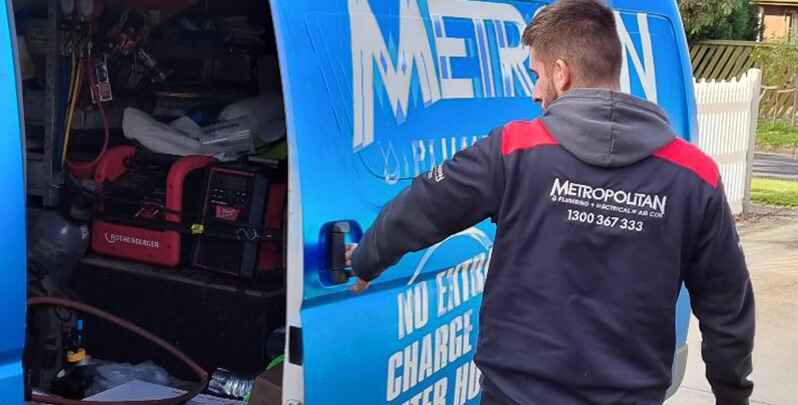
What are the Symptoms of Carbon Monoxide Poisoning?
Carbon monoxide poisoning is a serious health risk that every Australian homeowner should be aware of.
This invisible, odourless gas can stealthily work its way into your home due to leaks from fuel-burning appliances like gas stoves, water heaters, and fireplaces. Understanding the symptoms of carbon monoxide poisoning is crucial for early detection and prevention.
Let’s take a closer look at the common symptoms, how to respond if you suspect exposure to carbon monoxide fumes, and essential tips for preventing leaks in your home.
Why Carbon Monoxide is So Dangerous
Before we answer the question “What are the symptoms of carbon monoxide poisoning?”, let’s explore why it’s so dangerous in the first place.
Carbon monoxide is dangerous because it forms during the incomplete combustion of fuels such as natural gas, coal, wood, and petrol. When these fuels do not burn completely, they release carbon monoxide (CO) instead of carbon dioxide (CO2). As we’ve already said, this gas is odourless and colourless which means it’s virtually undetectable to the human senses. This makes it a silent yet genuine threat in your home.
When you inhale the toxic fumes of CO, they bind to your red blood cells more effectively than oxygen. This reduces the oxygen levels in your body and stops your vital organs from working properly. Naturally, this leads to a range of health issues which we’re here to explore.
How Carbon Monoxide Leaks Occur
Carbon monoxide leaks can occur in various ways, often stemming from common household appliances and improper ventilation. Here are some typical sources of CO leaks in the home:
- Gas appliances: Faulty or poorly maintained gas stoves, ovens, and water heaters can emit carbon monoxide.
- Fuel-burning space heaters: These can produce CO if they are not vented properly or are used in enclosed spaces.
- Fireplaces and wood stoves: Inadequate ventilation or chimney blockages can result in dangerous levels of CO.
- Gas furnaces: A faulty wall furnace can release carbon monoxide into your home.
By understanding these potential sources and conducting testing for carbon monoxide, you can take steps to prevent CO leaks and ensure your home remains safe. Regular maintenance and using a carbon monoxide alarm are crucial for protecting against this odourless gas. So with all this in mind, let’s look more into some common CO poisoning symptoms.
Headaches and Dizziness
Among the first symptoms of carbon monoxide poisoning are headaches and dizziness.
When carbon monoxide levels rise, the body struggles to get enough oxygen, leading to these preliminary warning signs. If you or your family members frequently experience unexplained headaches or feel lightheaded, it could be due to carbon monoxide exposure.
Recognising these symptoms promptly is crucial, as prolonged exposure can lead to more severe carbon monoxide poisoning symptoms. Make sure you have sufficient and effective ventilation throughout your home, and regularly check your gas appliances. Doing so can help to prevent these dangerous leaks.
Weakness and Fatigue
Carbon monoxide exposure might also lead you to feel weakness and fatigue.
When exposed to carbon monoxide, your body’s oxygen supply is compromised, which results in noticeable tiredness and muscle weakness. You might feel unusually exhausted, even after a good night’s sleep, or struggling with simple tasks. This is because carbon monoxide is more effective at binding to red blood cells than oxygen, reducing the oxygen available to your muscles and organs.
Identifying and addressing these symptoms ASAP can prevent serious carbon monoxide poisoning and make sure your home stays a safe environment.
Nausea and Vomiting
Nausea and vomiting are troubling symptoms of carbon monoxide poisoning that many might mistake for being the result of food poisoning or a stomach bug.
As we’ve already learned, when carbon monoxide enters your body, it deprives it of oxygen and can lead to these potentially distressing symptoms. If you or your family members experience unexplained nausea and vomiting, especially when indoors, it could be due to carbon monoxide exposure. Unlike food poisoning, these symptoms will typically subside when you breathe fresh air or leave the affected area.
Recognising these signs and ensuring your gas appliances are vented properly can help prevent carbon monoxide poisoning and keep your home safe.
Confusion and Memory Loss
Confusion and memory loss are serious symptoms of carbon monoxide poisoning that indicate significant exposure to this dangerous gas.
Higher than normal CO levels mean that the brain receives less oxygen. This can impair cognitive functions and lead to confusion, disorientation, and difficulty remembering recent events. You may find yourself feeling uncharacteristically forgetful or even struggling to concentrate on simple tasks. These symptoms can be particularly alarming and, if exposure continues, can worsen over time.
Being aware of these symptoms early and addressing potential sources of CO is crucial to preventing severe carbon monoxide poisoning and protecting your brain health.
Chest Pain and Loss of Consciousness
Finally, chest pain and loss of consciousness are among the more severe symptoms of carbon monoxide poisoning. Both signal an urgent need for immediate action.
Exposure to high levels of carbon monoxide can lead to intense chest pain, resembling a heart attack, and can quickly escalate to loss of consciousness.
If you or someone in your home experiences these symptoms, move to fresh air immediately and seek emergency medical help.
Of course, we can’t ignore the fact that CO exposure, at excessively dangerous levels, can result in fatality. After all, it’s not called “the silent killer” for nothing.

What To Do If You Suspect CO Poisoning
If you suspect carbon monoxide poisoning, quick and decisive action is essential to ensure safety. Here’s what you should do:
- Move to fresh air immediately: Get everyone outside to breathe fresh air and reduce exposure.
- Call emergency services: Contact 000 to seek immediate medical help.
- Ventilate your home: If safe to do so, open windows and doors to allow fresh air to circulate and reduce carbon monoxide levels.
- Turn off potential sources: Switch off gas appliances and other potential CO sources.
- Seek medical attention: Even if symptoms improve, see a doctor for a thorough check-up and possible oxygen therapy.
- Do not re-enter until safe: Only go back inside once a licensed gas fitter or emergency services specialist confirms it’s safe.
Taking these steps ASAP can prevent severe carbon monoxide poisoning and ensure your family’s safety. Regularly checking and maintaining your gas equipment can help avoid future carbon monoxide-related incidents.
How is CO Poisoning Diagnosed?
Diagnosing carbon monoxide poisoning typically involves a combination of clinical evaluation and specific tests.
If you suspect CO poisoning, seek medical attention immediately. A medical professional will gauge your symptoms and exposure history. A carboxyhaemoglobin blood test measures the amount of carbon monoxide bound to your red blood cells, confirming CO exposure. Sometimes, a pulse oximeter can indicate abnormal oxygen levels which will then prompt further testing.
Accurate diagnosis is crucial for timely treatment. Knowing how to identify the symptoms of carbon monoxide poisoning as early as possible, and informing medical professionals about potential exposure, can help deliver a fast and accurate diagnosis.
How Is Carbon Monoxide Poisoning Treated?
Treating carbon monoxide poisoning promptly is vital to prevent severe health complications.
Immediate oxygen therapy, in which the patient is administered 100% oxygen via a mask, helps to quickly remove CO from the bloodstream. In severe cases, you may be placed in a hyperbaric oxygen chamber to accelerate the displacement of CO and restore normal oxygen levels.
Supportive care, including monitoring and treating symptoms like chest pain, confusion, and nausea, ensures full recovery. Early treatment can significantly reduce the risk of long-term effects from carbon monoxide poisoning. Always seek medical help if you suspect CO exposure and follow through with the recommended treatment plan to ensure a full recovery.
How to Prevent Carbon Monoxide Poisoning
Preventing carbon monoxide leaks is crucial for keeping your home safe. Here are some effective measures you can take:
- Install carbon monoxide detectors: Place a carbon monoxide detector next to each bedroom and gas appliance to alert you to any leaks.
- Regular maintenance: Have your gas appliances, including stoves, heaters, and hot water systems, inspected and serviced by a registered gas fitter.
- Ensure proper ventilation: Make sure all fuel-burning appliances are vented properly to the outside to avoid CO build-up.
- Use appliances correctly: Follow the manufacturer’s instructions for all gas equipment and avoid using fuel-burning space heaters in enclosed spaces.
- Check chimneys and flues: Keep chimneys and flues clear of blockages to allow safe venting of CO.
Implementing these steps can significantly reduce the risk of carbon monoxide poisoning and ensure a safe living environment for your family. Regular vigilance and maintenance of your carbon monoxide detector and any appliances are key to preventing dangerous CO leaks.
Protect Yourself from CO Exposure
Understanding the symptoms of carbon monoxide poisoning and how to prevent it is crucial for every Australian homeowner.
By recognising early warning signs like headaches, dizziness, and nausea, you can take swift action to protect your family. Regularly maintaining gas-powered appliances, ensuring proper ventilation, and installing carbon monoxide detectors are vital steps in preventing CO leaks. Remember, this odourless gas can be deadly, but with the right precautions, you can significantly reduce the risk.
Keep your home safe, stay informed, and don’t hesitate to seek medical attention if you suspect carbon monoxide exposure. Prioritising these measures will help ensure a healthy and secure living environment for you and your loved ones.
Please note: Thanks for reading our blog “What are the Symptoms of Carbon Monoxide Poisoning?”. This information is provided for advice purposes only. Regulations differ from state to state, so please consult your local authorities or an industry professional before proceeding with any work. See our Terms & Conditions here.
Published: 2024-06-18

















